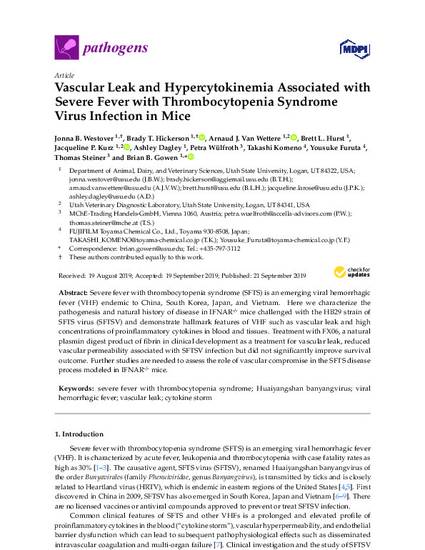
Severe fever with thrombocytopenia syndrome (SFTS) is an emerging viral hemorrhagic fever (VHF) endemic to China, South Korea, Japan, and Vietnam. Here we characterize the pathogenesis and natural history of disease in IFNAR-/- mice challenged with the HB29 strain of SFTS virus (SFTSV) and demonstrate hallmark features of VHF such as vascular leak and high concentrations of proinflammatory cytokines in blood and tissues. Treatment with FX06, a natural plasmin digest product of fibrin in clinical development as a treatment for vascular leak, reduced vascular permeability associated with SFTSV infection but did not significantly improve survival outcome. Further studies are needed to assess the role of vascular compromise in the SFTS disease process modeled in IFNAR-/- mice.
